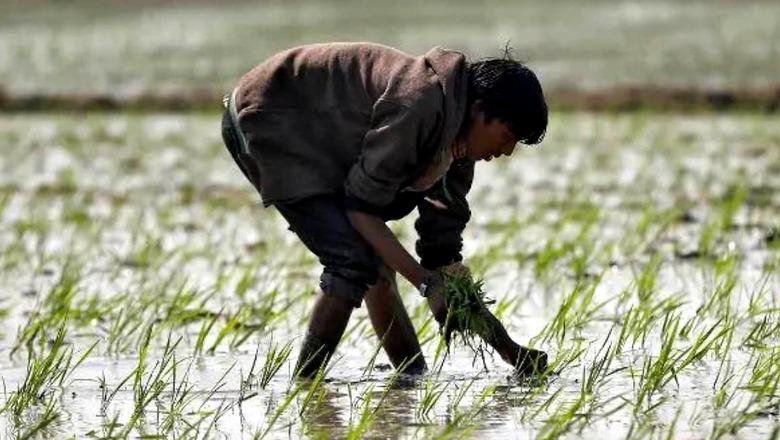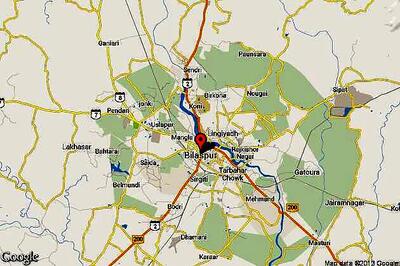
views
Ahead of Budget 2022, agricultural reforms have again taken centre stage not only in the minds of politicians but also policymakers. To enable farmers to improve their income, they must have access to latest research and development (R&D). Record Rabi production last year has come as a silver lining and brought cheer to the agriculture sector amid the coronavirus pandemic-driven downturn. However, the farming sector merits more governmental support than what is budgeted for the Ministry of Agriculture and Farmers Welfare, considering the significance of healthy food and a balanced diet for immunity is much better recognised today. Needless to say that research is the bedrock of modern agricultural development. And, it is about time we ensure ample funding for agricultural R&D in the Budget.
The central Budget allocation for agricultural R&D is a meagre Rs 8,514 crore in FY 2021-22 as against Rs 7,762 crore in FY 2020-21, of which around 85 per cent goes towards salaries and other administrative/establishment expenditure, with little left for research. As per the Indian Council of Agriculture Research (ICAR), in 2018-19, of Rs 2,858-crore budgetary allocation, as much as Rs 1,697 crore was spent on salaries. The same with state agriculture universities facing financial crunch for R&D work.
According to the Economic Survey, the total R&D expenditure in India as a percentage of agricultural GDP has been stagnant at 0.3 to 0.5 per cent in the last two decades. It is much lower than the US (2.8 per cent), China (2.1 per cent), South Korea (4.3 per cent) and Israel (4.2 per cent). Since the 9th Five-Year Plan (1997-2002), efforts have been made, though in vain, to increase R&D spending to 1 per cent of the agricultural GDP by the end of each Plan period.
Such minuscule investments in R&D in India impede the ability of science and technology research to tackle multiple challenges faced by agriculture — crop yield gaps, changing consumer preferences, declining resource capacity, the geopolitical situation, and adverse impact of climate change that leads to farm distress.
Interestingly, India has the largest agricultural R&D system that includes 27,500 scientists and more than one lakh support staff, not to mention several agencies in the sector and the expenditure involved in running them. ICAR directly oversees 118 research institutes, including three central and four deemed universities, 64 research institutes, 17 national research centres, six national bureaux and 25 project directorates. Besides the nationwide R&D set up under the ICAR, there are 63 state agricultural universities. Despite such a large agricultural research network, the Indian system has failed to respond to some of the biggest problems faced by its agriculture sector — be it cost-effectiveness of crop production, productivity, water scarcity, marketing, food processing, etc.
Today, the challenges before Indian agriculture are more daunting. Since May 2014, the National Agricultural Research System (NARS) under the ICAR has released and notified 1,406 varieties of field crops. But beyond this, we need an inclusive ‘Evergreen Revolution’. Not too long after it had spread across the north-western plains, the realisation dawned that Green Revolution technologies had been selective in impact. The rain-fed areas, resource-poor farmers and landless labourers had all been bypassed. Hence, research priorities now need reorientation towards the greening of grey (rain-fed) areas across the nation.
Agricultural R&D, however, still has a long way to go to move away from the ‘business-as-usual’ activities. It needs to develop an end-to-end package of interventions and strategic policy support, tailored to the needs of particular crops and agro-ecologies in specific areas. This calls for invigorating the scientific temper, focusing on problem-solving as part of the human resource capacity-building, and fostering R&D funding.
The importance of farmers’ contribution in the fight against hunger and poverty, the most foundational of the Sustainable Development Goals, cannot be undermined. The slogan ‘Jai Jawan, Jai Kisan, Jai Vigyan’ reiterates the need to bolster the support for agricultural science and technology if our country is to remain globally competitive while achieving the goal of ‘Atmanirbhar Bharat’. It has to be emphasised that farmer welfare has to be crafted through the farmer-first approach, amply backed by appropriate policies, incentives, institutions and up-scaling of innovations and R&D.
The multi-dimensionality of doubling farmers’ income necessitates the transformation of Indian agriculture from a 20th-century production-centric system to a 21st-century holistic agri-food system. Research reorientation now demands greater thrust on innovation to bridge the gaps between knowledge and technology, which is critical for robust value chains focused on a ‘plough-to-plate’ continuum.
To double the income of resource-poor farmers, there is a need for technologies that lower input costs and build resilience in farming activities. Watershed management, agroforestry, silvi-pasture activities, farming around secondary and specialty agriculture, etc. have gained importance. Horticulture, pulses, oilseeds, spices, medicinal plants, fodder crops, dairying, animal husbandry, aquaculture and activities like beekeeping, mushroom cultivation, vermicomposting, poultry, piggery, etc. are and should be receiving priority from researchers.
To counter the adverse environmental effects of the second-generation problems of Green Revolution such as land degradation and consequently reduced soil fertility, receding groundwater, factor productivity decline and biodiversity loss, a paradigm shift is needed towards promotion of sustainable agriculture through conservation agriculture, organic farming, micro-irrigation and nutrient-use efficiency.
‘More crop per drop’ has become the new mantra. Resource-conserving and climate-smart technologies such as zero-tillage, drip irrigation, crop varieties resistant to drought, flood, heat, cold and pests are commanding greater attention from scientists. Integrated pest and nutrient management, organic matter recycling, use of biofertilisers and biopesticides now occupy the centre stage.
Innovations have to be scaled up urgently around hybrid technology, biotechnology, protected cultivation, precision farming, bioenergy, crop biofortification, remote sensing, information and communication technology, etc. Drones, sensors, Artificial Intelligence (AI) and the Internet of Things hold the potential to improve efficiencies in agri-food production, post-production management and agro-processing.
Prime Minister Narendra Modi envisions making India a $5-trillion economy by 2024-25. The agriculture sector should aim to contribute at least $1 trillion to this national effort. And to this end, technologies arising from enhanced investment in agricultural research hold the potential to provide the required momentum.
Agricultural research needs a booster dose. Increasing R&D spending on agriculture is not only a vital necessity for ensuring national food security but also important from the socio-economic point of view. The onus is now on the central government to increase special financial allocations for research and development in the agricultural sector in the upcoming Budget.
The writer is Vice Chairman of Punjab State Planning Board and Chairman, ASSOCHAM Northern Region Council. The views expressed in this article are those of the author and do not represent the stand of this publication.
Read all the Latest Opinions here




















Comments
0 comment